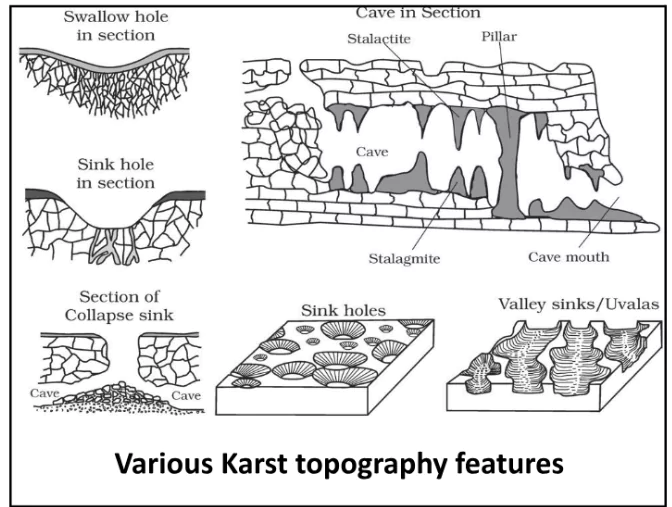![]() April 27, 2024
April 27, 2024
![]() 10928
10928
![]() 0
0
Groundwater plays a significant role in eroding landmasses and shaping landforms, especially in regions with calcium carbonate-rich rocks like limestone and dolomite. Key groundwater processes involve solution and deposition. Groundwater activity forms a distinctive landform in limestone regions known as Karst topography. Let’s discover how the actions of groundwater erosion and deposition mould the land
 Sinkholes: These are depressions that are circular at the top and funnel-shaped at the bottom. Formed in 2 ways:
Sinkholes: These are depressions that are circular at the top and funnel-shaped at the bottom. Formed in 2 ways:
| Must Read | |
| Current Affairs | Editorial Analysis |
| Upsc Notes | Upsc Blogs |
| NCERT Notes | Free Main Answer Writing |
| Related Articles | |
| Groundwater Recharge | Formation Of Landform: Impact Of Ice & Waves |
| Earthquakes: Forces, Causes, and Protective Measures | 7 Continents and 5 Oceans in Order of the World |
<div class="new-fform">
</div>
Latest Comments